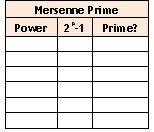
It is easy to create an Excel workbook with so many worksheets you can’t see them all at a glance. Scrolling to find them is a drag, so the creators of Excel have provided a convenient alternative.
If you want to see/use an inventory of your worksheets, all you need to do is right-click ("right-click is our friend") the tabs navigation buttons and a floating list of all the worksheets will appear.
Where are my worksheets? Right-click navigation and Bamm! – There they are!
If you want to see/use an inventory of your worksheets, all you need to do is right-click ("right-click is our friend") the tabs navigation buttons and a floating list of all the worksheets will appear.
Where are my worksheets? Right-click navigation and Bamm! – There they are!

 2. Starting in A3, insert consecutive numbers starting with 2 into Column A.
2. Starting in A3, insert consecutive numbers starting with 2 into Column A.


